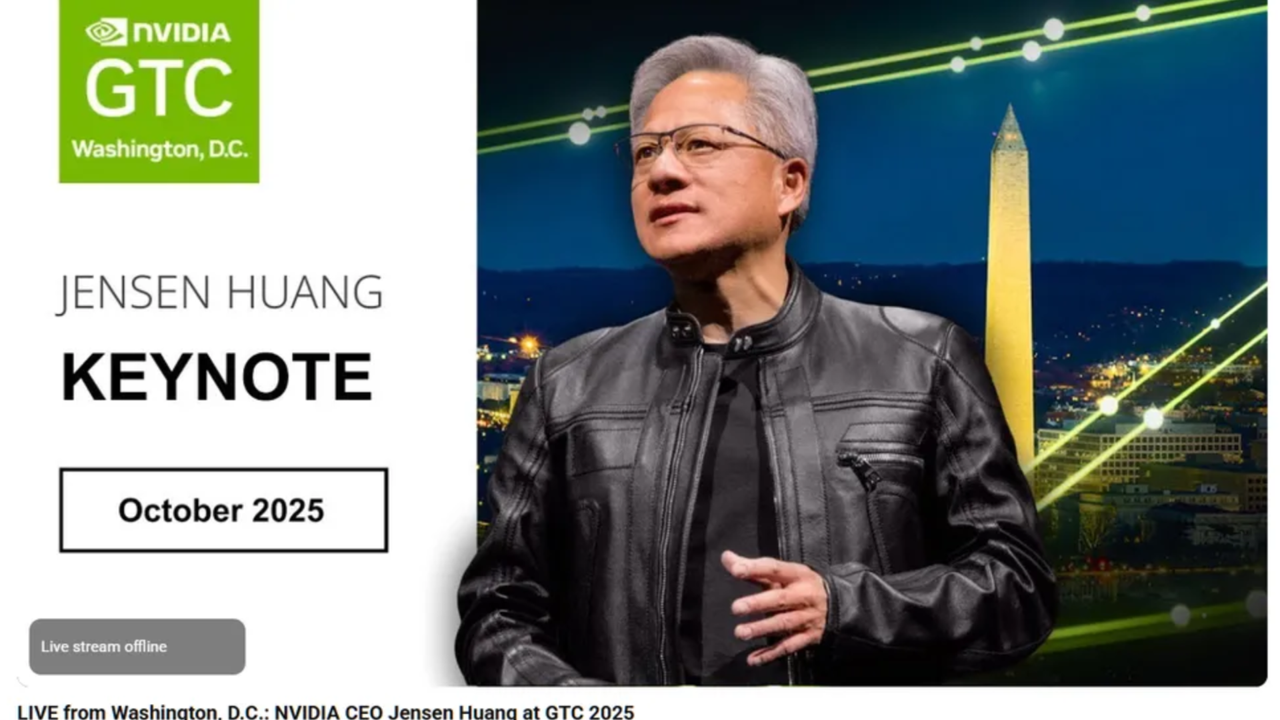
- Nearly 100,000 people watched a made-up livestream believing it was real
- YouTube Algorithm Powered Scam Event Over Verified Nvidia Stream
- Viewers were invited to scan a QR code for a cryptocurrency giveaway.
In a stark reminder of how easily digital manipulation can spread, a fake Nvidia GTC keynote featuring an AI-generated version of Jensen Huang attracted nearly 100,000 viewers on YouTube.
The fraudulent livestream promoted a supposed “mass cryptocurrency adoption event” and was hosted by a random channel called Offxbeatz.
However, it appeared under the title “Nvidia Live,” which made it look official to unsuspecting users.
How the fake keynote outperformed the real one
First seen by tech journalist Dylan Martin, the real Nvidia GTC DC keynote had barely begun when the fake stream rose to the top of YouTube search results.
When Huang began speaking at the legitimate event, only about 12,000 people were watching, compared to nearly 95,000 following the fabricated broadcast.
The AI-generated “Jensen” greeted the audience and promised an exclusive cryptocurrency announcement that aligned with Nvidia’s purported “mission to accelerate human progress.”
What followed was a written narrative praising Nvidia GPUs for powering blockchain networks and digital payments.
The entire setup ended with a QR code inviting viewers to participate in a cryptocurrency distribution scheme, a textbook example of an online financial scam.
Despite the clever presentation, several signs made the deception quite obvious.
The deepfake’s speech patterns were slightly unnatural, and the exaggerated claims about cryptocurrency adoption should have raised suspicions among careful viewers.
Yet tens of thousands of people kept watching, showing how easily powerful images can overcome basic skepticism.
YouTube eventually removed the stream, but its brief success shows how algorithmic promotion can elevate fraudulent content above verified sources.
The video, described as the product of a modern AI hoax, was convincing enough to fool thousands of viewers searching for the event.
It shows how deepfake technology has surpassed the current moderation systems of many platforms.
Without stronger verification methods, these synthetic spoofs are likely to continue to spread.
Traditional cybersecurity measures, such as antivirus software and firewalls, remain vital for device-level protection.
Unfortunately, they offer little defense against large-scale manipulation that relies on social engineering and real-time deception.
Platforms should therefore invest in better identity verification tools that can authenticate live streams before they are made public.
Beyond the platform’s responsibility, users also need greater skepticism when participating in online events, especially those involving cryptocurrency transactions.
As of this writing, there is no evidence that anyone has lost money due to the scheme.
Still, the incident shows that a large number of viewers does not guarantee authenticity.
Follow TechRadar on Google News and add us as a preferred source to receive news, reviews and opinions from our experts in your feeds. Be sure to click the Follow button!
And of course you can also follow TechRadar on TikTok for news, reviews, unboxings in video form and receive regular updates from us on WhatsApp also.



